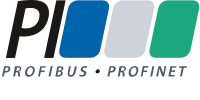Overview
Consistent and application oriented
PROFIBUS is the fieldbus-based automation standard of PROFIBUS & PROFINET International (PI). Via a single bus cable, PROFIBUS links controller or control systems with decentralized field devices (sensors and actuators) on the field level and also enables consistent data exchange with higher ranking communication systems. Consistency of PROFIBUS is enabled by utilizing a single, standardized, application-independent communication protocol (named PROFIBUS DP), which, without any difference, supports fieldbus solutions both in factory and process automation as well as in motion control and safety-related tasks.
PROFIBUS is modularely structured as building block (fig. 1) with the communication protocol as core component. This is combined with application-specific modules for transmission, application (“Applica-tion profiles”) and engineering to form complete PPROFIBUS solutions for specific market segments (industry sectors), as shown in fig. 2.
To ensure correct interaction between the numerous devices of an automation solution, the basic de-vice functions and services must match in regard to communication, functionality and industry sector solutions. This uniformity is achieved by means of "application profiles" which refer to device families or special industry sector requirements, e.g. process automation (PA Devices), Motion Control (PROFIdrive) or integration of HART devices (HART on PROFIBUS).
The "hybrid" factor of PROFIBUS
PROFIBUS covers factory and process automation with the same consistent communication protocol and therefore enables mixed (hybrid) applications, which are often seen in the pharmaceutical or food and beverage industries or in water and waste water applications. Here, continuously running processes, e.g. mixing or drying, are typically combined with discrete functions such as identifying, conveying or packing (fig. 3). Here, the common communication protocol PROFIBUS DP combined with specific application profiles provides a powerful advantage: both process and factory automation networks can be connected to the same single cable. Other buses focus on either process or discrete markets so they always have to use a second fieldbus, which means extra expense for cabling, equipment, skills, maintenance and support. PROFIBUS is alone in delivering a single solu-tion for both sectors.
Unreached consistency
In figure 4, PROFIBUS DP is in the central position and carries communication data between a controller and field devices, preferably in Factory Automation (FA). Downwards, a PROFIBUS PA string is connected through a coupler or linking device to enable typical process automation (PA) applications, e.g. in a hazardous enviroments. Upwards, the controller is connected to PROFINET as system bus and interface to MES and ERP levels. PA segments can also be connected directly to PROFINET using proxy technology.
The value propostion of PROFIBUS
is commandingly high, enabling it to cut costs and improve business results across the life cycle of a plant. It does this in many ways:
- At the engineering stage it simplifies plant design, eliminates hard wiring and requires less hardware, leading to faster commissioning and lowered costs.
- It also supports better diagnostics, so commissioning is much faster.
- It helps achieve better productivity and higher product quality through the delivery of better and more timely data to operations and management staff.
- It supports advanced asset management strategies that allow plants and equipment to be better managed and maintained.

